Interleukin-11 is important for vascular smooth muscle phenotypic switching and aortic inflammation, fibrosis and remodeling in mouse models
- PMID: 33082445
- PMCID: PMC7576123
- DOI: 10.1038/s41598-020-74944-7
Interleukin-11 is important for vascular smooth muscle phenotypic switching and aortic inflammation, fibrosis and remodeling in mouse models
Abstract
Transforming growth factor beta-1 (TGFβ1) is a major driver of vascular smooth muscle cell (VSMC) phenotypic switching, an important pathobiology in arterial disease. We performed RNA-sequencing of TGFβ1-stimulated human aortic or arterial VSMCs which revealed large and consistent upregulation of Interleukin 11 (IL11). IL11 has an unknown function in VSMCs, which highly express the IL11 receptor alpha, suggestive of an autocrine loop. In vitro, IL11 activated ERK signaling, but inhibited STAT3 activity, and caused VSMC phenotypic switching to a similar extent as TGFβ1 or angiotensin II (ANGII) stimulation. Genetic or therapeutic inhibition of IL11 signaling reduced TGFβ1- or ANGII-induced VSMC phenotypic switching, placing IL11 activity downstream of these factors. Aortas of mice with Myh11-driven IL11 expression were remodeled and had reduced contractile but increased matrix and inflammatory genes expression. In two models of arterial pressure loading, IL11 was upregulated in the aorta and neutralizing IL11 antibodies reduced remodeling along with matrix and pro-inflammatory gene expression. These data show that IL11 plays an important role in VSMC phenotype switching, vascular inflammation and aortic pathobiology.
Conflict of interest statement
S.A.C. and S.S. are co-inventors of the patent applications ‘Treatment of fibrosis’ (WO/2017/103108) and ‘IL-11 antibodies’ (WO/2018/109174). S.A.C., S.S., W.W.L. and B.N are co-inventors of the patent application ‘Treatment of SMC mediated disease’ (WO/2019/073057). S.A.C. and S.S. are co-founders and shareholders of Enleofen Bio PTE LTD, a company (which S.A.C. is a director of) that develops anti-IL11 therapeutics. All other authors declare no competing interests.
Figures
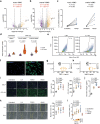
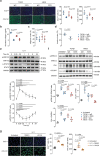
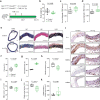
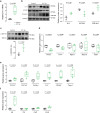

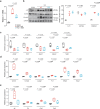

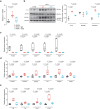
Similar articles
-
Inhibition of IL11 Signaling Reduces Aortic Pathology in Murine Marfan Syndrome.Circ Res. 2022 Mar 4;130(5):728-740. doi: 10.1161/CIRCRESAHA.121.320381. Epub 2022 Feb 9. Circ Res. 2022. PMID: 35135328
-
SIRT3 Represses Vascular Remodeling via Reducing Mitochondrial Ac-CoA Accumulation in Vascular Smooth Muscle Cells.Arterioscler Thromb Vasc Biol. 2025 Jun;45(6):985-1005. doi: 10.1161/ATVBAHA.125.322428. Epub 2025 Apr 17. Arterioscler Thromb Vasc Biol. 2025. PMID: 40242869
-
Nesfatin-1 functions as a switch for phenotype transformation and proliferation of VSMCs in hypertensive vascular remodeling.Biochim Biophys Acta Mol Basis Dis. 2018 Jun;1864(6 Pt A):2154-2168. doi: 10.1016/j.bbadis.2018.04.002. Epub 2018 Apr 5. Biochim Biophys Acta Mol Basis Dis. 2018. PMID: 29627363
-
Role of Vascular Smooth Muscle Cell Phenotype Switching in Arteriogenesis.Int J Mol Sci. 2021 Sep 30;22(19):10585. doi: 10.3390/ijms221910585. Int J Mol Sci. 2021. PMID: 34638923 Free PMC article. Review.
-
Smooth muscle cell-driven vascular diseases and molecular mechanisms of VSMC plasticity.Cell Signal. 2018 Dec;52:48-64. doi: 10.1016/j.cellsig.2018.08.019. Epub 2018 Aug 30. Cell Signal. 2018. PMID: 30172025 Review.
Cited by
-
Emerging therapeutic targets in systemic sclerosis.J Mol Med (Berl). 2024 Apr;102(4):465-478. doi: 10.1007/s00109-024-02424-w. Epub 2024 Feb 22. J Mol Med (Berl). 2024. PMID: 38386070 Review.
-
METTL3/N6-methyladenosine/ miR-21-5p promotes obstructive renal fibrosis by regulating inflammation through SPRY1/ERK/NF-κB pathway activation.J Cell Mol Med. 2021 Aug;25(16):7660-7674. doi: 10.1111/jcmm.16603. Epub 2021 Jun 24. J Cell Mol Med. 2021. PMID: 34164910 Free PMC article.
-
IL-11 system participates in pulmonary artery remodeling and hypertension in pulmonary fibrosis.Respir Res. 2022 Nov 15;23(1):313. doi: 10.1186/s12931-022-02241-0. Respir Res. 2022. PMID: 36376885 Free PMC article.
-
IL11 Stimulates IL33 Expression and Proinflammatory Fibroblast Activation across Tissues.Int J Mol Sci. 2022 Aug 10;23(16):8900. doi: 10.3390/ijms23168900. Int J Mol Sci. 2022. PMID: 36012165 Free PMC article.
-
Rapid cyclic stretching induces a synthetic, proinflammatory phenotype in cultured human intestinal smooth muscle, with the potential to alter signaling to adjacent bowel cells.bioRxiv [Preprint]. 2024 Oct 15:2024.10.12.617767. doi: 10.1101/2024.10.12.617767. bioRxiv. 2024. PMID: 39464046 Free PMC article. Preprint.
References
Publication types
MeSH terms
Substances
Grants and funding
LinkOut - more resources
Full Text Sources
Other Literature Sources
Molecular Biology Databases
Miscellaneous

